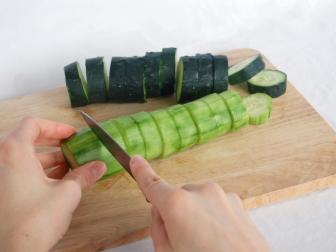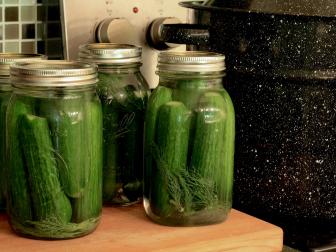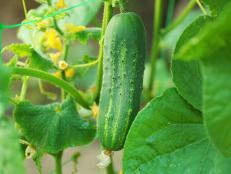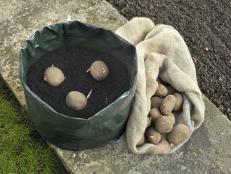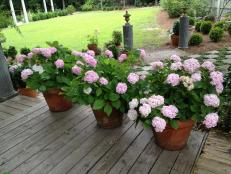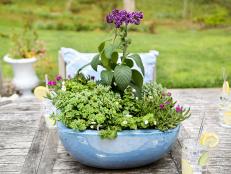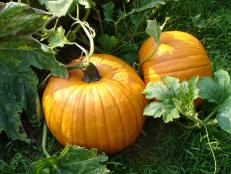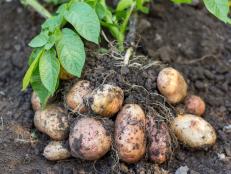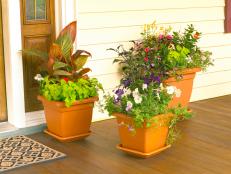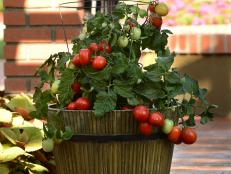How to Grow Cucumbers in a Pot
Growing cool, crunchy cucumbers in a container is easy if you know the steps. These basics will make them a success.

Cucumbers may seem like an unlikely plant to grow in a pot. Yet they can make excellent container plants that produce an abundance of delightfully cool fruit in summer's hottest months. All you need is a warm and sunny spot and the know-how to choose and grow the right cucumber for containers. Here’s how to do it.

Discover how to easily grow delicious cucumbers in containers for fresh veggies all summer long.
Select Bush Cucumbers
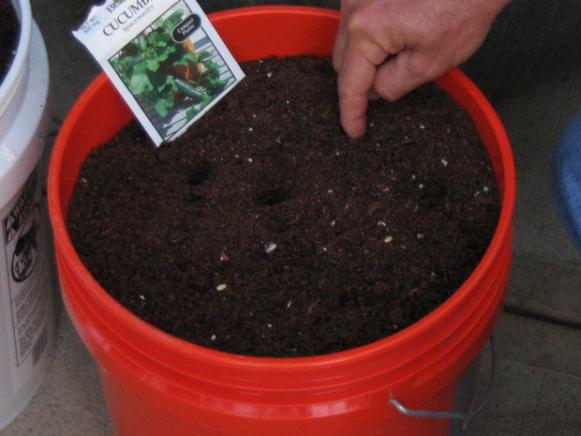
Cucumbers are either vining or bush type in form. With their shorter and sturdy vines, bush cucumbers are the best choice for container growing. Look for plants or seeds whose name contains the word bush. Popular varieties with other names, such as Spacemaster, will be identified as good for containers. Compact or dwarf bush are ideal. Select a variety whose days to maturity suit your growing zone.
Cucumbers are naturally monoecious, a term that means they have both male and female flowers. The male flowers bloom first and then normally drop off the plants. Female flowers remain and can be identified by the small fruit at their base.
Know Their Type
Two newer forms of cucumbers feature chiefly female flowers.
- Gynoecious cucumbers can yield bountiful harvests but require pollination. Many seed companies include a few dyed male seeds in packets of female seed or provide male seeds separately.
- Parthenocarpic cucumbers are gynoecious in type but set fruit without pollination. These hybrids are seedless or nearly so and perform well in urban gardens where bees may be scarce.
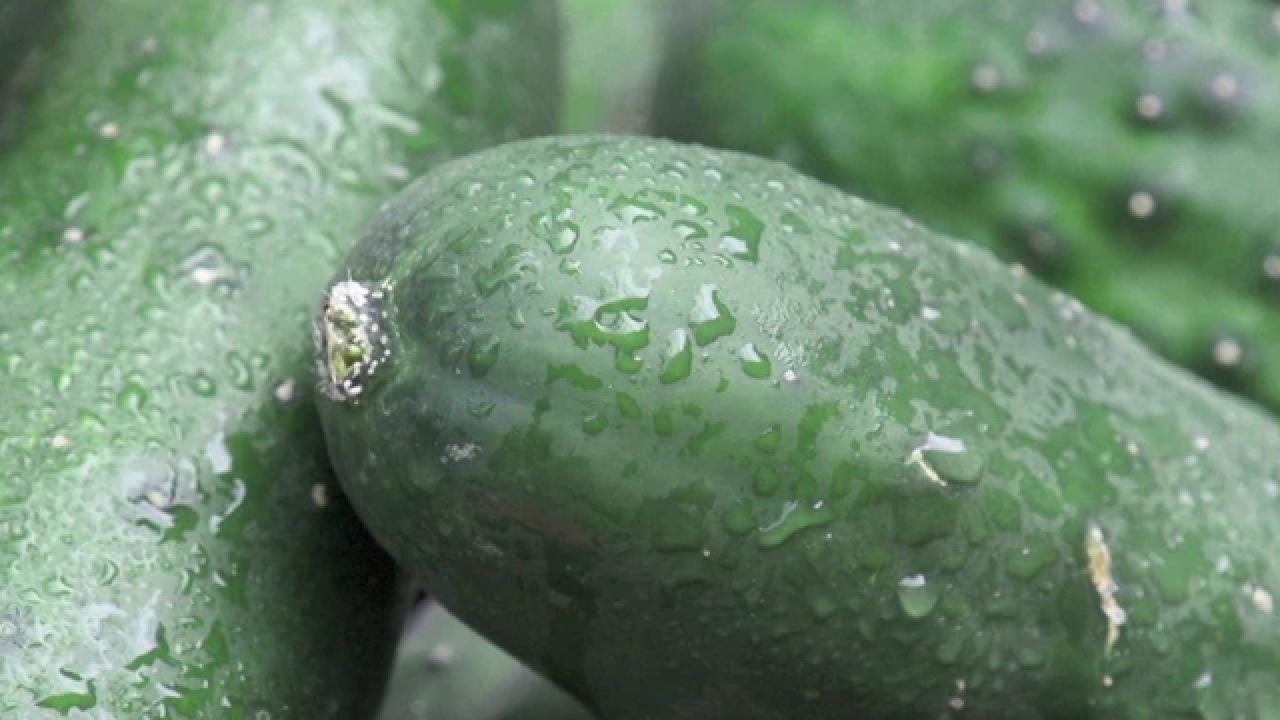
Prep for Success
Success begins with the right pot and soil. Water-loving cucumbers do best in plastic or ceramic containers, whose material retains moisture. Pots need holes in their bottom for drainage, and size does matter.
- Ideal pots are a foot or more in depth, and that size will increase your harvest. A pot that’s 20 inches wide can accommodate four to six plants. Two or three plants will fit in a five-gallon bucket or grow one cucumber in a 10-inch-wide container.
- Mix soil with equal parts of compost, potting soil, perlite and peat moss. The compost or rotted manure will get plants off to a good start, or blend in granules of a balanced fertilizer, such as 10-10-10. Follow label instructions on the amount.
- Provide a sturdy support. Except for a few dwarf varieties, cucumbers require support. Add a trellis or teepee of sticks at the time of planting. Tomato cages also work as do central stakes. Tie plants gently to the stakes as they grow.
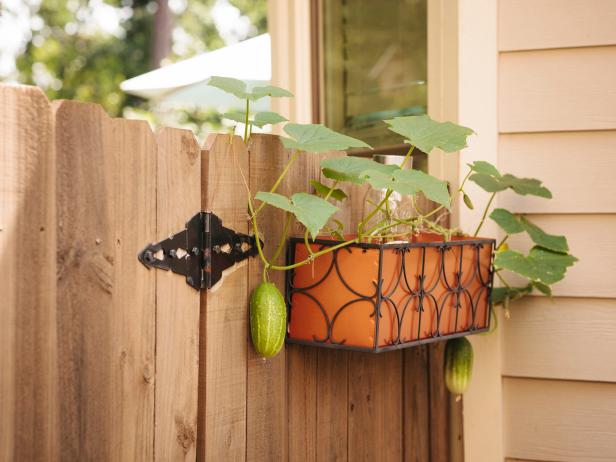
Image courtesy of Ben Rollins
This cucumber plant grows in a window box mounted to a fence, which serves as a strong trellis.
Plant When Temperatures Warm
Wait until the soil temperature warms past 60 degrees before direct sowing. For a head start, plant seeds in peat pots indoors three to four weeks before the frost-free date and then plant the intact peat pots in outdoor containers to avoid damaging the tender young seedlings.
Planting outdoors, sow seeds a half inch to inch deep and plant more than you need. When they are one to two inches tall, select the strongest seedlings and thin the others by snipping them at the soil level.
For a steady harvest, you can succession plant cucumbers to extend fruiting into fall. The planting interval can be as short as every two weeks, or every month, to simply once at mid to late summer. Base the frequency on the length of your growing season and the number of cucumbers you desire.
Grow With Care
The three keys to growing cucumber are ample water, steady feed and close monitoring for problems.
- Check soil moisture daily and water when the top inch or two of soil is dry. Apply the water evenly and deeply until water runs out the bottom of the pot. Watering at the base of the plant helps keep water off the leaves to reduce disease risk. To conserve moisture, add a layer of mulch when the soil reaches 75 degrees. As the plant develops, place extra mulch under vines or fruit that grow level with the soil to ward off disease.
- Fertilize the seedlings after their first true leaves appear using a time-released pelleted fertilizer. A 1-1.5-3 NPK ratio is optimal. Then stay on schedule with weekly applications of a low-nitrogen, high-potassium fertilizer. Follow label instructions for plant type and pot size.
- Be extra vigilant for pests and disease and act quickly when they appear. Insects can threaten young seedlings even before their first mature leaves appear. Striped or spotted cucumber beetles are particularly pernicious. Often you can control them simply by removing and squishing them, but heavy infestations may require the use of horticultural oil or insecticidal soap. Floating ground cover, to remove when flowering begins, also wards off pests. Cucumbers and other members of the cucurbit family are affected by many plant diseases. Carbaryl (Sevin) or pyrethrum as an organic treatment work well for controls. The best practice is to spray at sunset and use a liquid rather than a powder form of carbaryl to lower the risk of harm to bees. Bees are the chief pollinators of cucumbers.
Harvest Early and Often
Cucumbers grow rapidly, so watch closely for fruit and pick them before they become overly mature and develop a bitter taste. Harvest early in the morning for optimal flavor and texture. Cut or clip the fruit from the vine to avoid damage to the plant. Be sure to remove all large fruit, including cucumbers that may have flaws, so the plant will continue actively flowering.
Store Properly
Refrigerate immediately after picking. Store cucumbers in loose or perforated plastic bags and use within three days.
Get the Most Out of Your Cucumbers
Freezing Cucumbers
Learn how to freeze cucumbers for summer-fresh fare in any season.
Q&A: Cucumber Beetles
Here's a tip on how to get rid of cucumber beetles.
How to Make Dill Pickles
A dill pickle recipe that keeps the dilly punch in the crunch.






